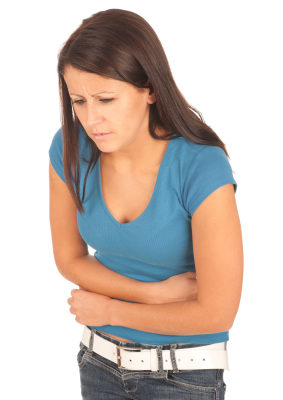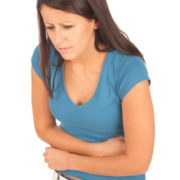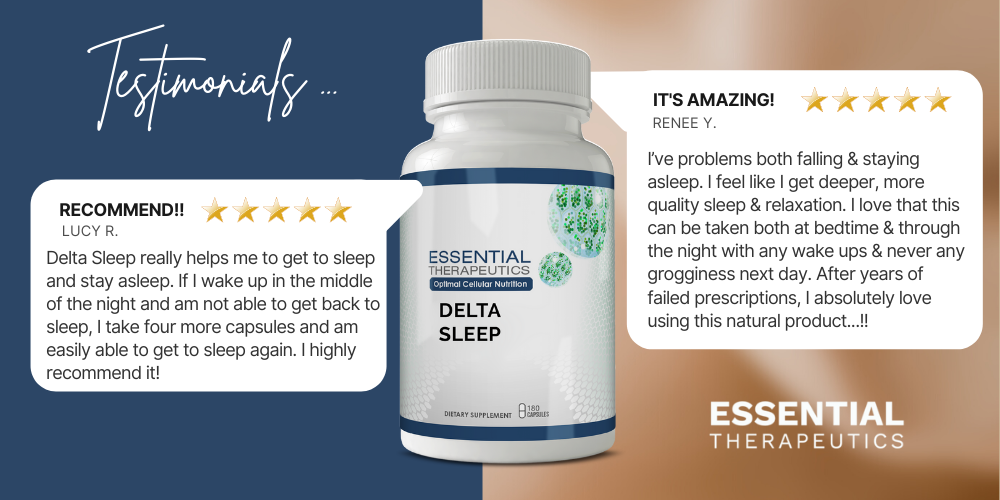Yucky Yeast Overgrowth? Here’s what to do about it!
 The internet has a plethora of health-related websites and blogs that hone in on some of the more popular conditions and attempt to explain them in their own terms. One of those conditions recently is anything to do with “Candida.”
The internet has a plethora of health-related websites and blogs that hone in on some of the more popular conditions and attempt to explain them in their own terms. One of those conditions recently is anything to do with “Candida.”
Unfortunately, “candida” (or “yeast overgrowth”) has become too common of a term on these blogs. It has become a “catchall” to describe any sort of bowel irregularity or condition of the GI system that can’t be easily explained. So, how do you know if yeast truly is at the root of your symptoms?
Do you have yeast overgrowth? Here are the signs:
Candiais can cause: Constipation, diarrhea, irritable bowel syndrome, abdominal pain, bloating, gas and indigestion, rash, bladder spasms and infections, ear infections, sinus infections, rectal itching, itchy ears or nose, sugar or starch cravings, white tongue (thrush), toe or finger nail infections, jock itch, chronic vaginal yeast infections, intestinal permeability, increased body odor, PMS, asthma, depression, chronic fatigue, headaches, body aches, and low moods.
Candida yeast overgrowth can cause all sorts of health problems and the symptoms are often attributed to other health problems that don’t exist. An example is heartburn or GERD, where the patient has a lot of abdominal pain, gas, bloating, and discomfort-It is easier to place a patient on a proton pump inhibitor or antacid drug than to investigate, find, treat and correct the cause-yeast overgrowth.
Like most opportunistic infections, Candida and other yeasts may increase during times of stress. This is a common complaint in my fibro and CFS patients, since acute or chronic stress is the catalyst for their illness in the first place.
Here’s How to Treat it!
Step 1: Eliminate yeast promoting foods. A number of dietary factors appear to promote the overgrowth of Candida. Eliminate all the foods below for three months.
Yeast Overgrowth 3 Month Diet
- Sugar is the chief nutrient for Candida albicans, so restricted sugar intake is absolutely necessity to effectively treat chronic Candidiasis.
- Avoid refined sugar, honey, maple syrup, fruit juice, milk, white potatoes, corn, beans, processed or bleached (white) flour, bakery goods, muffins, cereals, and anything containing sugar. Ice cream, cake, cookies, and other sweets should be avoided for at least three months.
- No potato or corn chips, pretzels, or crackers.
- No dried fruits – including raisins.
- Fruits should also be avoided, along with fruit juice (except the fruit juice taken with 5HTP – if that has been prescribed for you).
After the initial two weeks, try introducing apples and pears to see if you have any reactions. (Reactions might include fatigue, depression, aches and pain, rectal itching, itching of the ears or nose, and digestive disturbances.) If not, then try berries: strawberries, blueberries, blackberries, and raspberries. Avoid all other fruits.
- Alcoholic beverages should be avoided, as should malted-milk or other malted products.
- Mold – and yeast-containing foods are best avoided for two–three months. These include peanuts, dried fruits (including prunes, raisins, and dates), vinegar, pickled vegetables, sauerkraut, relishes, green olives, vinegar-containing salad dressings, catsup, mayonnaise and, pickles.
- No milk or dairy products. All natural (unsweetened) yogurt is allowed.
- Most vitamin and mineral supplements purchased at a drug store are contaminated with yeast. Follow your doctors recommendations about which supplements are acceptable.
Candida Diet: What you Can Eat
All Vegetables – Artichokes, Asparagus, Beets, Brussels sprouts, Cabbage, Carrots, Cauliflower, Chicory, Collards, Egg Plant,Green Beans, Green Peas, Mustard Greens, Okra, String Beans, Turnip Greens, Lettuces, Alfalfa Sprouts, Bamboo Shoots,Broccoli, Cabbage, Cauliflower, Celery, Chives, Dandelion, Endive, Fennel, Kale, Kelp, Leeks, Lettuce, Mung Bean Sprouts,Parsley, Peppers, Rhubarb, Spinach, Squash, Swiss Chard, Water Cress, Fresh tomatoes and onions are also allowed, along with summer squash and zucchini – all types of squash.
Meats and Proteins (All Lean Cuts)
Beef, Chicken, Clams, Crab, Eggs, Ham, Lobster, Salmon, Shrimp, Tuna, Turkey, Veal, Also all game birds and animals such as squirrel, rabbit, quail, duck, goose, and venison are allowed.
Nuts and Seeds – In limited amounts (one ounce) — Walnuts, cashews, almonds, sunflower seeds and pumpkin Seeds.
Use cold pressed non-hydrogenated oils
Use only cold pressed or expeller pressed or non-hydrogenated oils (olive or canola oils). Also, you should take one tablespoon of virgin olive oil each day on your salads or vegetables. You can add lemon juice to this if you so desire. The best salad dressing is virgin olive oil in lemon juice.
Other Items – Butter is fine, avoid margarine. You may have one cup of oatmeal (the old fashioned kind) per day. Sweet and Low is ok.
Natural plant based sweeteners like stevia or FOS are best.
Fructo-oligosaccharide (FOS) is a short-chain polysaccharide used in Japan for dozens of years. It isn’t digested by humans but does stimulate the growth of good bacteria within the intestinal tract. It also helps with liver detoxification, lowers cholesterol, and eliminates various toxins. It can be used as a natural sweetener.
Stevia is remarkable (no calories, no carbs) herb, native to Paraguay. It has been used as a sweetener and flavor enhancer for centuries. It doesn’t promote the growth of yeast and can be used as a natural sweetener in food and beverages.
Make sure you’re taking yeast-free products. All of the protects I recommend to my patients, including the Essential Therapeutics CFS/Fibromyalgia formula, 5HTP, adrenal cortex, etc. are yeast free.
Step 2: Improve digestion.
Gastric hydrochloric acid and pancreatic enzymes help keep Candida from overgrowing in the small intestine.
- Supplement with pancreatic enzymes with each meal. LINK TO DIGESTIVE ENZYMES HERE
- Supplement with betaine hydrochloric acid with each meal. Yeast can’t live in an acidic environment.
Step 3: Replace good bacteria.
Such as Lactobacillus acidophilus, L. bulgaricus, L. catnaforme, L. fermentum, and Bifidobacteria bifida. These normally inhabit vaginal and gastrointestinal tracts; help digest, absorb, and produce certain nutrients; and keep potentially harmful bacteria and yeast in check.
- Use probiotics twelve hours after taking antibiotics. Acidophilus has proven to be effective in treating irritable bowel syndrome, H. pylori, diarrhea, and colitis. And it’s especially helpful in treating yeast overgrowth.
Yogurt contains certain strains of good bacteria, but it isn’t standardized for a particular amount. Also, most yogurts are made from L. bulgaricus or Streptococcus thermophilus. Both are friendly bacteria, but neither will help colonize the colon. So it’s best to use live organisms that are shipped on ice and then kept refrigerated until purchase. Live L. acidophilus and B. bifidum powders or capsules are preferred.
2. Supplement with probiotics for three months: 5–10 billion organisms on an empty stomach each day. Some extremely resistant yeast infections may need continuous probiotic replacement therapy.
Step 4:
Always take milk thistle and or alpha lipoic acid when taking antifungal medication (including natural anti-yeast supplements).
This helps reduce liver toxicity.
Use natural remedies either by themselves or in combination with prescription medications. Patients should use a natural remedy or prescription antifungal medication for at least three months.
Difficult cases of yeast overgrowth will require a longer treatment of six months or more.
I use a product called a yeast formula with the following ingredients:
Yeast Formula
- Calcium undecylenate 150mg (see below).
- Sorbic acid 50mg is a potent anti-yeast nutrient.
- Beberine Sulfate 200mg (see below).
- Indian Barberry (Berberis aristata) min. of 6% berberine 50mg (see below).
- Chinese Goldenthread, min 20% berberine 25mg is a broad spectrum anti-yeast supplement.
- Green Tea leaf, min 80% 50mg is a potent anti-oxidant.
Undecylenic acid is one of the most powerful anti-yeast medications available. I have patients take one tablet a day and slowly increase up to 3 tablets a day with food. This concentrated, broad-spectrum formula combines specific natural agents useful in supporting a healthy balance of intestinal micro flora, thus discouraging the overgrowth of yeast. Sustained release and ph balanced, this potent formula is readily absorbed into the small and large intestine.
Berberine or Barberry has a wide range of antimicrobial properties. It is a proven herbal medicine used successfully to treat fungal, bacterial, and parasitic infections.
Other Natural Antifungal Medications
- Caprylic acid is a naturally occurring fatty acid and a potent antifungal medicine. It should be taken as an enteric-coated timed-release capsule. Dosage is 500–1,000 mg. three times daily with food.
The Caprylic Acid is fungicidal for Candida albicans. It is harmless to friendly intestinal flora, and effective against the invasive mycelial form as well as the yeast form, because it is absorbed by the intestinal mucosal cells. Caprylic Acid is metabolized by the liver and does not get into the general circulation. It must exert its fungicidal effect in the intestinal tract or not at all. According to studies, just ten minutes after oral intake of straight Caprylic acid, more than 90% can be traced in the portal vein on its way to the liver. Consequently, Caprylic acid should be taken with psyllium powder which will form a gel in the intestinal tract and release the Caprylic acid trapped within over a period of time.
- Psyllium gradually scrapes away Candida albicans’ breeding ground (fecal encrustations) from the colon wall, absorbs toxins within the colon and carries them out, reduces toxic overload (“die-off reaction”) from poisons released by dying Candida during treatment. Because psyllium is not absorbed itself, toxic wastes are carried out in the feces. Available at most health food stores.
- Garlic has been used for medicinal purposes for centuries. It is an effective treatment for the overgrowth of Candida albicans and other yeasts. It has shown to be more potent than Nystatin for Candida albicans. Dosage of standardized garlic (1.3% alliin) is 600–900 mg. two–three times daily with food. Available at most health food stores.
- Citrus seed extract is a broad spectrum antimicrobial used to successfully treat yeast and bacterial parasites. Dosage is 100–200 mg. twice daily after meals. Available at most health food stores.
Knock back that yeast NOW with the Good Gut Health Starter Pack, 15% when bought together for a limited time.
[av_productlist categories='468' columns='1' items='1' offset='no_duplicates' sort='date' paginate='yes' link_behavior='' show_images='yes']
These patients and hundreds of others who’ve worked personally with me have in fact beaten their fibromyalgia. You can read or listen to their stories by clicking the link below:
|
|








Leave a Reply
Want to join the discussion?Feel free to contribute!